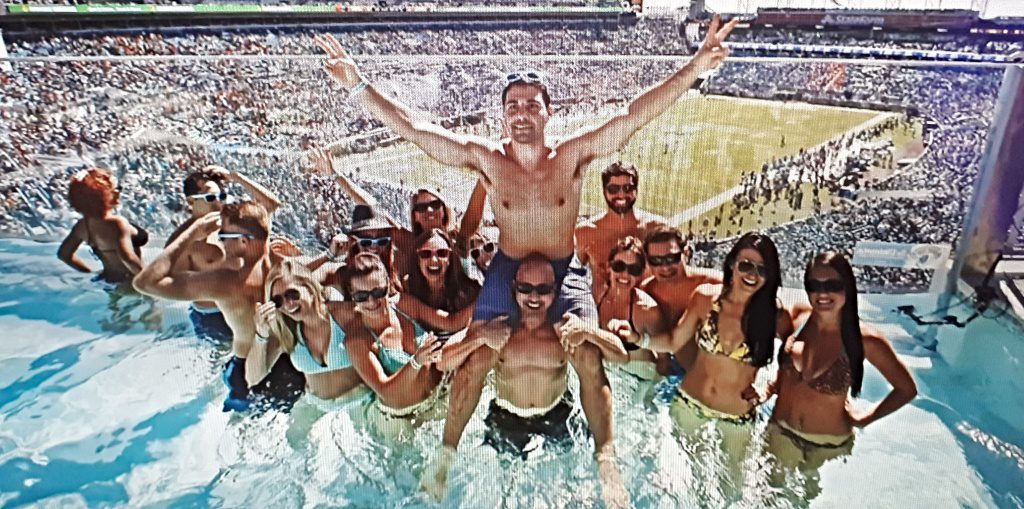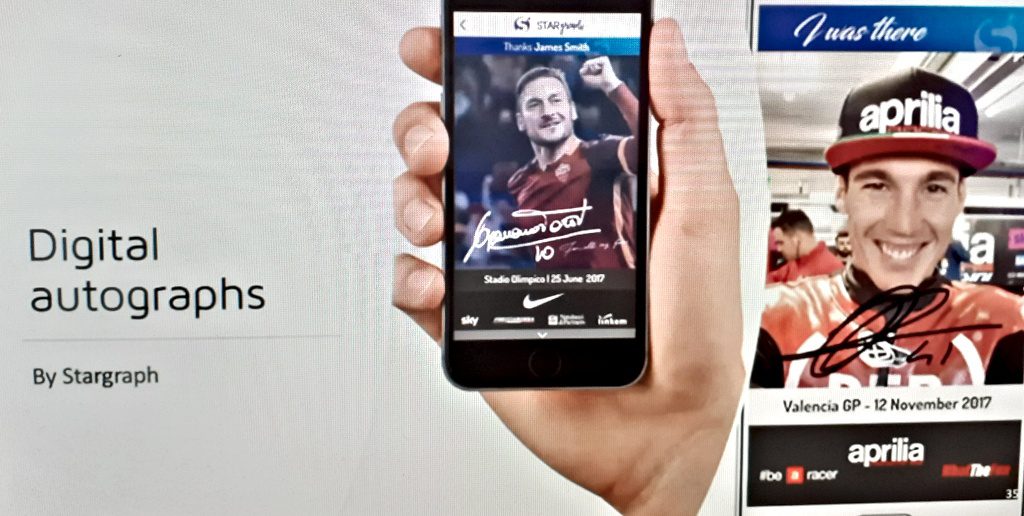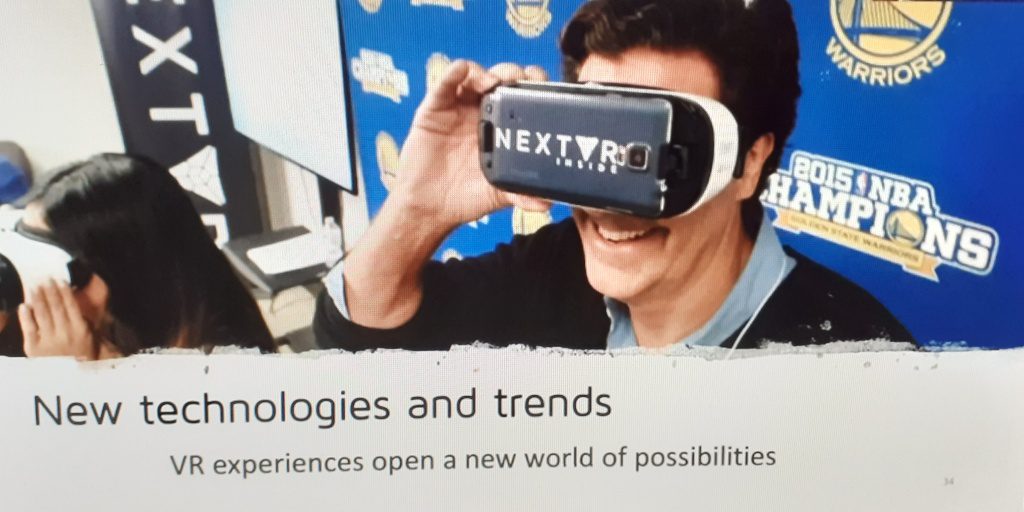
During the MICE expo IBTM World Virtual 2020, Sports Tourism Media had the chance to listen to an interesting presentation by Juli Ferré Nadal, principal of Thinking Heads Sports. The talk focused on building a distinctive and exciting brand experience in the context of a sport event; establishing an emotional connection with fans and potential customers; and to assess how digital fits into an ‘experiential’ sports marketing campaign.
During the Covid-19 pandemic and various lockdowns in 2020, one area which left a big hole in our lives was when elite sports competitions were cancelled and there was no chance to be a spectator in a stadium or even to view on TV. We all came to realise just how important sport is and its ability to generate much emotion. When the English Premier League resumed, albeit without fans, just being able to see the competition on our screens was a great tonic.
Juli Ferré Nadal (pictured below) started his presentation by saying that “nothing beats sports when it comes to feelings, the way it touches the hearts of people all over the world”. And he is right. There is such an immense pull and outpouring in passion, whichever sport you follow. Therefore, sports marketing has been a multi-billion dollar industry for many years now, but Nadal drills into the evolution of brand, customer and integrated experiences as a vehicle to get that all important product message to huge, engaged audiences.
What is a fan?
This can be a vague and rich definition, one that Nadal states has evolved dramatically over recent years; immediate perceptions which jump to mind is the male-centric world of tribal football fans, wearing team jerseys and going to watch a match with beer in hand and all the connotations that raises. Whilst this is very much still in existence, it is just the tip of the iceberg of the modern-day fan demographic and profile, sitting within a very different and diverse landscape, where female fans are a major part of the viewing public, like never before.
The female fan is truly on the rise, especially with the mega-investments going into women’s football and the success of the last FIFA Women’s World Cup. This is just one clear example, however, there are plenty more examples where sport is bridging the equality gap and changing the entire ecosystem of marketing in sport. The sports fan, the sports marketer and especially the sports travel market have long been growth areas, where opportunity and demand continues on an upward trajectory.
Right now, competitors of the Vendée Globe race are sailing non-stop, unassisted, single-handed around the world via three capes and three oceans in an effort to complete one of the most demanding and prestigious events within the sailing and sporting calendar. Of the British entries this year, 75% are women, which is something to be celebrated and the fact that men and women are competing on equal terms; this will encourage a new generation of diverse fans and audiences.
Experiential awakening
Nadal paints a convincing picture of the evolution of experiential marketing in sports, from its early origins of traditionally being based around hospitality, where the fan gets VIP treatment from the moment they step into the stadium, with a-la carte restaurant dining, whilst still being able to view all the action from a designated and luxurious area of the stadia. Again, this is still very much present in elite sports and clubs, who have long adapted their facilities to encourage this lucrative market.
Nowadays, many fans want to be even closer to the action, or better still be within ear-shot of players going in and out of the tunnel, to be able to see their reactions, whether positive or negative. Manchester City Football Club has done exactly that with a hospitality experience which places the fan right next to the glass-encased tunnel, bringing fans intimately close to the action and to get the players immediate and unique feedback.
Clubs, sporting entities and brands understand that the fan wants to be closer than ever to their idols, to the sport they love and to even have the chance to play on the hallowed turf of their idols and to glimpse the life of a professional. This has multi-generational appeal, and there are now opportunities that exist for brands to make this happen through brand and marketing activations.
Nadal has experienced this himself, stating through his presentation of having played within Barcelona’s stadium. He also showed an image of fans sitting in a swimming pool watching an American football match in the Jacksonville stadium, and Airbnb using experiential marketing to grant a select and lucky group of fans to sleep the night beside the pitch of the Allianz Arena, home of FC Bayern Munich.
Nadal stresses the key importance of sponsorship in the evolution of sports marketing, which now demands this more intimate access to high-profile assets. When it first began it was much devoted around branding and has morphed towards a high emphasis on the experiential side of the marketing mix, with “meet and greets” giving direct access to players. Major brands understand that they can create and bring this type of activation directly to their audiences through sponsorship making it a truly powerful tool.
Digital impact on sports marketing
The pandemic has acted as a catalyst for our requirements around the digital and virtual event landscape, to adopt these transformations so they can work for us. Nadal points to the way that digital activations are now an essential and a growing part in being able to grant intimate access even from a digital distance.
Fans can have one-to-on Zoom ‘meet and greet’ activations, and this is much more flexible to arrange especially when an athlete has a heavy training schedule. These virtual meetings are also more cost effective, but the recipient does not lose out on a souvenir as there are ways to provide a digital autograph through block chain, thus providing authenticity and a directly specific digital souvenir.
Last but not least is augmented reality; which is being used currently to enrich the fan experience through clever tech which places fans next to their idols in the virtual world, thus boosting their overall visitor experience. This of course, has great branding potential, all of which helps to create memories.
Experiential marketing in sports: today’s 2.0 version
The examples are there for all to see – the use of sporting ambassadors in all aspects of the fan journey – ahead of, during and post-match/event, their participation in the sport they love and their ability to talk about it in detail, is a valuable asset which brands, sponsors are keen to use. They have a unique position to convey the emotion of winning a critical match or being part of a historic sporting occasion, this is something fans crave to hear and will pay good money to listen to.
Brands can also bring their product experiences into the arenas that attract huge audiences; the clever and creative minds from major sponsor companies will make sure they are thinking up unique ways to gain attention.
Then there are the chances to actually engage with the sports personality through tutorials – imagine having the chance to be taught by your idol in the sport you love. These kinds of activations are applicable across so many sports, e.g. include a one-to-one lesson with your tennis idol.
Nadal talks of the main strands to keep in mind; that there is a demand for more than just hospitality and there is much demand for an access-all-areas type of experience. To keep up with current trends and offer once-in-a-lifetime chances through access to a star athlete, stadium or unique experience. The clear realisation that ‘behind-the-scenes’ access to idols is the most desired thing by fans and will bring great marketing value and return-on-investment if that can be delivered to audiences.
Nadal represents his company, Thinking Heads speaker bureau, and the opportunities they can facilitate. They have the network to arrange elite athletes, both past and present, to deliver keynote speakers offering deep insights and first-person perspectives on their career highlights and historical sporting moments. To have a big star present at your product launch, seated at the table of the CEO, opening your convention, or indeed to share their experiences, can carry important messages and core values, especially for teams in a corporate setting.
Nadal signed-off the presentation on a positive note; going into 2021 and as the pandemic hopefully recedes, there will be a craving for a return to live sport, but set against a new-normal digital and virtual understanding, which will broaden experiences. This hybrid mix will put the future of the sector in a good place.
See more at thinkingheads.com




